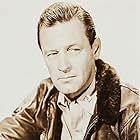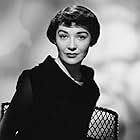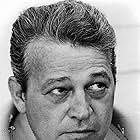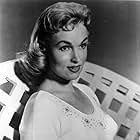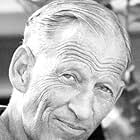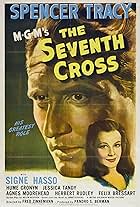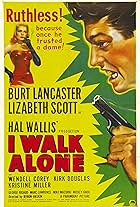At the dawn of supersonic flight in the 1950s, a group of Edwards Air Force Base experimental aircraft test pilots push themselves to the limit.At the dawn of supersonic flight in the 1950s, a group of Edwards Air Force Base experimental aircraft test pilots push themselves to the limit.At the dawn of supersonic flight in the 1950s, a group of Edwards Air Force Base experimental aircraft test pilots push themselves to the limit.
Richard H. Cutting
- Doc Bailey - Flight Surgeon
- (uncredited)
John Daheim
- Stranger in Nightclub Fight
- (uncredited)
Cathy Ferrara
- Lucy Craven
- (uncredited)
Don C. Harvey
- Jerry - Bartender
- (uncredited)
- Director
- Writer
- All cast & crew
- Production, box office & more at IMDbPro
Featured review
I think this is one of the best films on the gritty business of flight testing--back in the days before a bad airplane could be tested inside a computer program.
In several respects, it is a film of its time, with a young L.Q. Jones as a bumbling staff officer, a "love interest" and a sub-plot showing the protagonist, played by Bill Holden, as an agonized alumni of a Korean POW camp. In one of several galling items, he has made an attempt on his own life before the action began, but he is accepted as a test pilot anyway--which is absolutely bogus. Aircraft manufacturers are portrayed badly--which, in the main, the relevant history doesn't support. Disregard of orders is treated with unrealistic indulgence by a commander.
Read Scott Crossfield's autobiography for some corrects on this.
On the other hand, some of the action is simply great. A mythical bomber develops a metal fatigue problem in the air, which another pilot cannot duplicate. Several weeks later, the plane's wing once again fails and this time it costs a third pilot his life. (My personal take on this--there's a big difference between "fixing" the blame and fixing the problem.)
At this point and at several others, the film is a worthy complement to the Edwards AFB scenes of "The Right Stuff". The photography is simply stunning.
In several respects, it is a film of its time, with a young L.Q. Jones as a bumbling staff officer, a "love interest" and a sub-plot showing the protagonist, played by Bill Holden, as an agonized alumni of a Korean POW camp. In one of several galling items, he has made an attempt on his own life before the action began, but he is accepted as a test pilot anyway--which is absolutely bogus. Aircraft manufacturers are portrayed badly--which, in the main, the relevant history doesn't support. Disregard of orders is treated with unrealistic indulgence by a commander.
Read Scott Crossfield's autobiography for some corrects on this.
On the other hand, some of the action is simply great. A mythical bomber develops a metal fatigue problem in the air, which another pilot cannot duplicate. Several weeks later, the plane's wing once again fails and this time it costs a third pilot his life. (My personal take on this--there's a big difference between "fixing" the blame and fixing the problem.)
At this point and at several others, the film is a worthy complement to the Edwards AFB scenes of "The Right Stuff". The photography is simply stunning.
Storyline
Did you know
- TriviaThe scene with William Holden losing control and tumbling in the X-2 is depicted with footage from test pilot Chuck Yeager's 70,000-foot free-fall in the Bell X-1A in 1953.
- GoofsThroughout the film, General Banner's combat ribbons on his uniform keep changing in number. Early in the film he has three rows of combat ribbons. Later, he has five rows, and then three rows again.
- Quotes
Brig. Gen. Bill Banner: [to Maj. Lincoln Bond] Even with torture, you're not the kind to crack.
- ConnectionsReferenced in What's My Line?: June Taylor and Her Dancers & William Holden (1956)
- SoundtracksThe U.S. Air Force
by Robert Crawford
- How long is Toward the Unknown?Powered by Alexa
Details
Box office
- Budget
- $2,200,000 (estimated)
- Runtime1 hour 55 minutes
- Aspect ratio
- 1.85 : 1
Contribute to this page
Suggest an edit or add missing content


